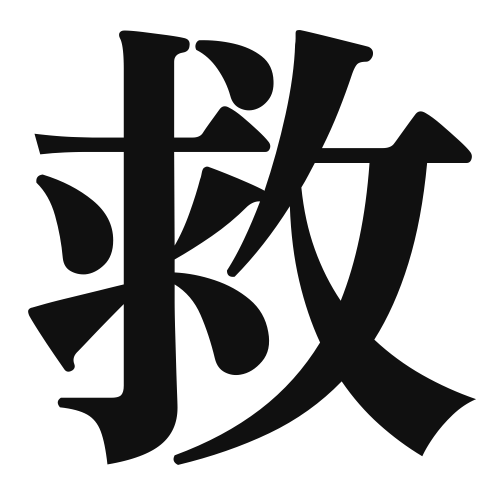1. Overview of Meaning
The kanji 救 (kyū) means “to save” or “to rescue.” It conveys the idea of helping someone in distress or providing assistance in a critical situation.
2. Formation and Radical
Formation of the Kanji: The kanji 救 is a phonetic-ideographic character (形声文字). It combines the radical for “hand” (手) on the left, which signifies action, and the phonetic component “九” (kyū) on the right, which contributes to its pronunciation.
Radical: The radical of 救 is 手 (te), meaning “hand,” indicating that the action of saving or rescuing involves physical help or intervention.
3. Examples of Usage
Common Words and Phrases: Some frequently used words that include 救 are:
- 救助 (きゅうじょ, kyūjo) – assistance, rescue
- 救急 (きゅうきゅう, kyūkyū) – emergency (medical)
- 救い (すくい, sukui) – salvation, relief
Example Sentences in Daily Conversation:
- 彼は溺れている人を救った。 (かれはおぼれているひとをすくった。) – He saved a person who was drowning.
- 救急車を呼んでください。 (きゅうきゅうしゃをよんでください。) – Please call an ambulance.
4. Synonyms and Antonyms
Similar Kanji: A kanji with a similar meaning is 助 (じょ, jo), which means “to help” or “to assist.” While both kanji involve providing aid, 救 emphasizes saving from danger, whereas 助 can refer to general assistance.
Antonyms: A kanji with an opposite meaning is 害 (がい, gai), which means “to harm” or “to injure.” This contrasts with 救, as it represents actions that cause distress rather than alleviate it.
5. Cultural and Historical Background
Relation to Japanese Culture: The concept of 救 is deeply embedded in Japanese culture, often associated with the values of compassion and community support. It reflects the importance of helping others in times of need.
Proverbs and Idioms: One common saying is 救いの手を差し伸べる (すくいのてをさしのべる, sukui no te o sashinoberu), which means “to extend a helping hand.” This phrase emphasizes the act of offering assistance to those in need.
